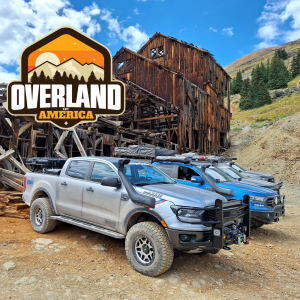corerftech
Well-Known Member
Hey all.
Thought I had my 302 with edelbrock 600 all lined out but I have seen an interesting deviation.
When tuning I nailed what I liked for AFR across the board. The engine bay was plenty hot for 100 miles of test drive and jet work.
A couple days later I hop in on a cool night and AFR is 1.5 richer. Stays that way for very short drives. It soaked briefly and AFR went UP leaner about 0.5. I initially thought air temps as test drive was evening and tune was a warmish/h day.
Today I drove it around town getting parts and many stops. First start was beautiful but AFR was fat compared to my original targets. After first stop, it leaned out a half point. Second stop a bit longer drive, it went 2 full points leaner. Too lean. All in the primaries.
My FPR is a QFT dead head and set for 5.75 lbs. My fuel pressure gauge doesn’t have enough resolution to see small changes effectively.
So my concern: the more heat soak the carb gets, the leaner it gets, to an end point.
The colder it is the fatter it gets, always during an overnight or long break of 12 hours, etc.
Now I jetted it in its last iteration, at 5.75 lbs, relatively cool. I am question if I need to lower fuel pressure maybe one full lb, then Jet to that pressure. Are my boosters leaking just a tick, that I can’t see…. When cold/cool and fuel pressure is at max regulated, then when heat comes on the small leak ends due to a drop below the leak threshold pressure and it then acts like it is jetted?
This is definitely a heat soak condition. All I will need to do to jet change is drop a lighter piston spring in and it will move 1.5 AFR points properly. But….. that’s won’t address the heat soak. I’ll then reverse the condition and have rich for 20 minutes. And then desirable afr.
Any thoughts? Edelbrock says not to let pressure drop below 4 psi but I’m taking about adjusting to 5 even, or a pinch below.
Low performance stock engine. It’s 200 hp, not 400, and that is being generous.
Appreciate the thoughts. Love to hear some wisdom. In any case I’ll drop the pressure and change springs and give it a try. Will report back.
Thanks for your time!
Thought I had my 302 with edelbrock 600 all lined out but I have seen an interesting deviation.
When tuning I nailed what I liked for AFR across the board. The engine bay was plenty hot for 100 miles of test drive and jet work.
A couple days later I hop in on a cool night and AFR is 1.5 richer. Stays that way for very short drives. It soaked briefly and AFR went UP leaner about 0.5. I initially thought air temps as test drive was evening and tune was a warmish/h day.
Today I drove it around town getting parts and many stops. First start was beautiful but AFR was fat compared to my original targets. After first stop, it leaned out a half point. Second stop a bit longer drive, it went 2 full points leaner. Too lean. All in the primaries.
My FPR is a QFT dead head and set for 5.75 lbs. My fuel pressure gauge doesn’t have enough resolution to see small changes effectively.
So my concern: the more heat soak the carb gets, the leaner it gets, to an end point.
The colder it is the fatter it gets, always during an overnight or long break of 12 hours, etc.
Now I jetted it in its last iteration, at 5.75 lbs, relatively cool. I am question if I need to lower fuel pressure maybe one full lb, then Jet to that pressure. Are my boosters leaking just a tick, that I can’t see…. When cold/cool and fuel pressure is at max regulated, then when heat comes on the small leak ends due to a drop below the leak threshold pressure and it then acts like it is jetted?
This is definitely a heat soak condition. All I will need to do to jet change is drop a lighter piston spring in and it will move 1.5 AFR points properly. But….. that’s won’t address the heat soak. I’ll then reverse the condition and have rich for 20 minutes. And then desirable afr.
Any thoughts? Edelbrock says not to let pressure drop below 4 psi but I’m taking about adjusting to 5 even, or a pinch below.
Low performance stock engine. It’s 200 hp, not 400, and that is being generous.
Appreciate the thoughts. Love to hear some wisdom. In any case I’ll drop the pressure and change springs and give it a try. Will report back.
Thanks for your time!













